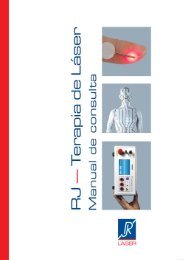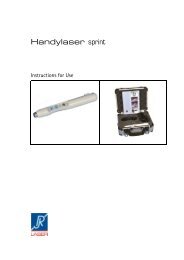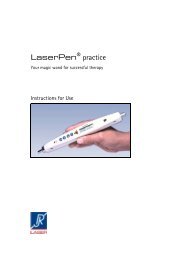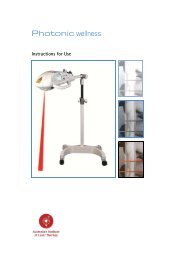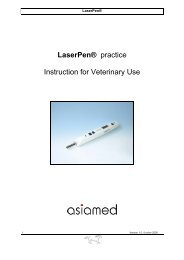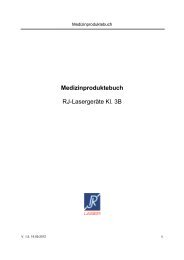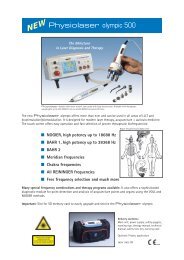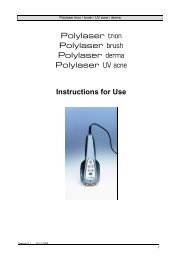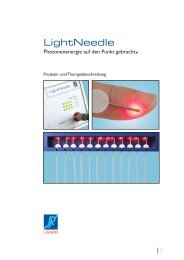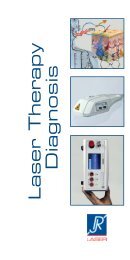You also want an ePaper? Increase the reach of your titles
YUMPU automatically turns print PDFs into web optimized ePapers that Google loves.
Physical principles of laser<br />
therapy<br />
Continuous wave and pulsed <strong>probes</strong><br />
In gentle, non-invasive laser therapy, also<br />
known as LLLT (Low Level <strong>Laser</strong> Therapy),<br />
in general, a laser with relatively low power<br />
is used. Within LLLT, Reimers & Janssen offers<br />
two different laser types: CW <strong>probes</strong><br />
(CW=continuous wave) emit a continuous<br />
wave laser light with an output power from 5<br />
– 500 mW and with pulsed <strong>probes</strong>, extremely<br />
short, but up to 50 W strong light pulses<br />
are emitted sequentially.<br />
The light emission with both probe types<br />
can be controlled by frequency modulation.<br />
With this, the laser beam is periodically switched<br />
on and off. In your control unit’s software<br />
this is referred to as “frequency”. You<br />
can use your therapy programs with preprogrammed<br />
frequency modulation or simply<br />
program the frequencies yourself. Please read<br />
about this in the user manual for your control<br />
unit.<br />
When using frequencies, please note that<br />
the on- and off times of the laser beam are<br />
equal with the CW <strong>probes</strong>. Thus, the energy<br />
output is always half that of a continuous<br />
wave – independent of the magnitude of<br />
the frequency. In contrast, with superpulsed<br />
<strong>probes</strong> – which generally cannot be operated<br />
with a continuous wave – the energy<br />
output amount depends on the selected<br />
frequency. The highest energy is emitted at<br />
the maximum frequency<br />
.<br />
Reimers & Janssen CW <strong>probes</strong><br />
Reimers & Janssen pulsed <strong>probes</strong><br />
13<br />
26





